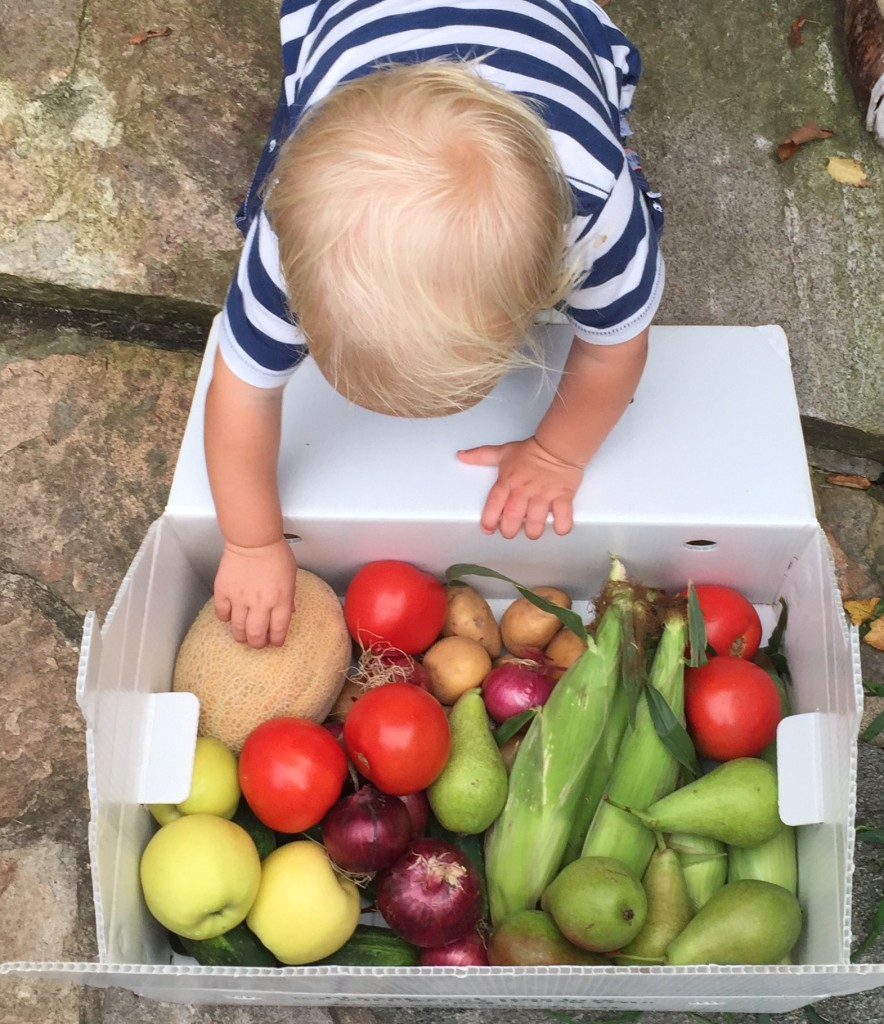
One of the reasons I carpool is so I have time to cook dinner. On the nights that I am not driving, it is nice to have time to make something homemade and healthy. Of course driving to and from the grocery store also takes up time, so I have been trying different delivery services. I have traditionally been a huge FreshDirect fan, and I still use the service almost weekly. That helps, but I still forget to order certain things. There is something about staring at a computer screen that makes the whole experience less engaging; in the grocery store you see food that looks good and you buy it, or remember you need it for a recipe. For me, when I shop online I tend to forget more. So, to solve that problem I have been trying out BlueApron and HelloFresh–they supply all the ingredients for one meal.
I enjoy all of these services, but as I head out to the recycling bin with the bottles and boxes associated with the deliveries, I often wonder whether the convenience of having grocery delivering is causing more environmental damage than if I went to the store myself. Are there more or less emissions? Is there more or less packaging?
I was relieved to discover that in terms of emissions, food delivery IS the greener option. This study from the University of Washington found the emissions are less when we stay home to cook and let the trucks do the driving.

This diagram shows how a delivery truck can save on mileage when compared with personal vehicles driving to and from a store. Goodchild/Wygonik
For customers who are still concerned about emissions, FreshDirect indicates that certain time slots are “eco-friendly.” These are slots that your neighbors have already selected, so joining them in the slot will minimize the truck’s driving. They also use biodiesel in many of their trucks. For the companies providing food only for one meal, I think the emissions savings are significantly less–but of course that depends how many grocery runs you make going back for the ingredients you forgot!
Packaging is a little bit more problematic. For FreshDirect there are a lot of cardboard boxes. The only option is to recycle them. HelloFresh and BlueApron have many small plastic and paper containers. BlueApron has tackled the issue head on, providing creative ideas for recycling their packaging.
HelloFresh also encourages creative reuse and also suggests that customers ship back certain recyclable items for free.
I was unable to find any studies that compare packaging waste for grocery stores versus these services, but I would think it depends to a great extent on whether you bring your own bags. I always plan to, but often forget, and those bags are wasteful as well.
All in all I was relieved to discover that these grocery delivery options seem to be greener than the alternative–me driving to the store–although the recycling issue still concerns me. In that regard the best option is my local farm share. I am a CSA member with Gazy Brothers, a farm in Oxford, CT. Each Wednesday I get a delivery of fresh seasonal produce which is either dropped in my cooler or arrives in a cardboard box that Gazy retrieves the following week. There is very little, if any, packaging, and the contents are always a surprise. The kids have been surprisingly willing to try some of the more unusual offerings, like elephant kale and swiss chard, and have been hugely enthusiastic about the tiny native strawberries and yellow watermelon.
For me, the farm share hits the sweet spot because the one little van driving around delivering to my community is not producing a lot of emissions, the packaging is minimal and the food is very fresh because it is all local–grown just a couple hours away. And, of course, the delivery saves me time and encourages me to eat more veggies.







0